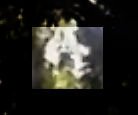I wasn't there, and your question is something of a non-sequitur. The black crest is a definitive field mark and one that is very hard to mistake. He's also noted the typical upper and underwing patterns of the IBWO and a manner of flight that is utterly unlike that of a Pileated.
A number of simple possibilities to explain missing the bill spring to mind: angle, lighting, discoloration, the observer focusing on other features, or any combination of these factors.
I haven't seen an Ivory-bill (maybe I'll get lucky soon), but I think it's far, far more reasonable to think an observer would miss the bill altogether (especially on a bird in flight) than it is to suggest that he would erroneously describe vivid red as black.
A number of simple possibilities to explain missing the bill spring to mind: angle, lighting, discoloration, the observer focusing on other features, or any combination of these factors.
I haven't seen an Ivory-bill (maybe I'll get lucky soon), but I think it's far, far more reasonable to think an observer would miss the bill altogether (especially on a bird in flight) than it is to suggest that he would erroneously describe vivid red as black.
Jane Turner said:Then why couldn't he see the bill!




